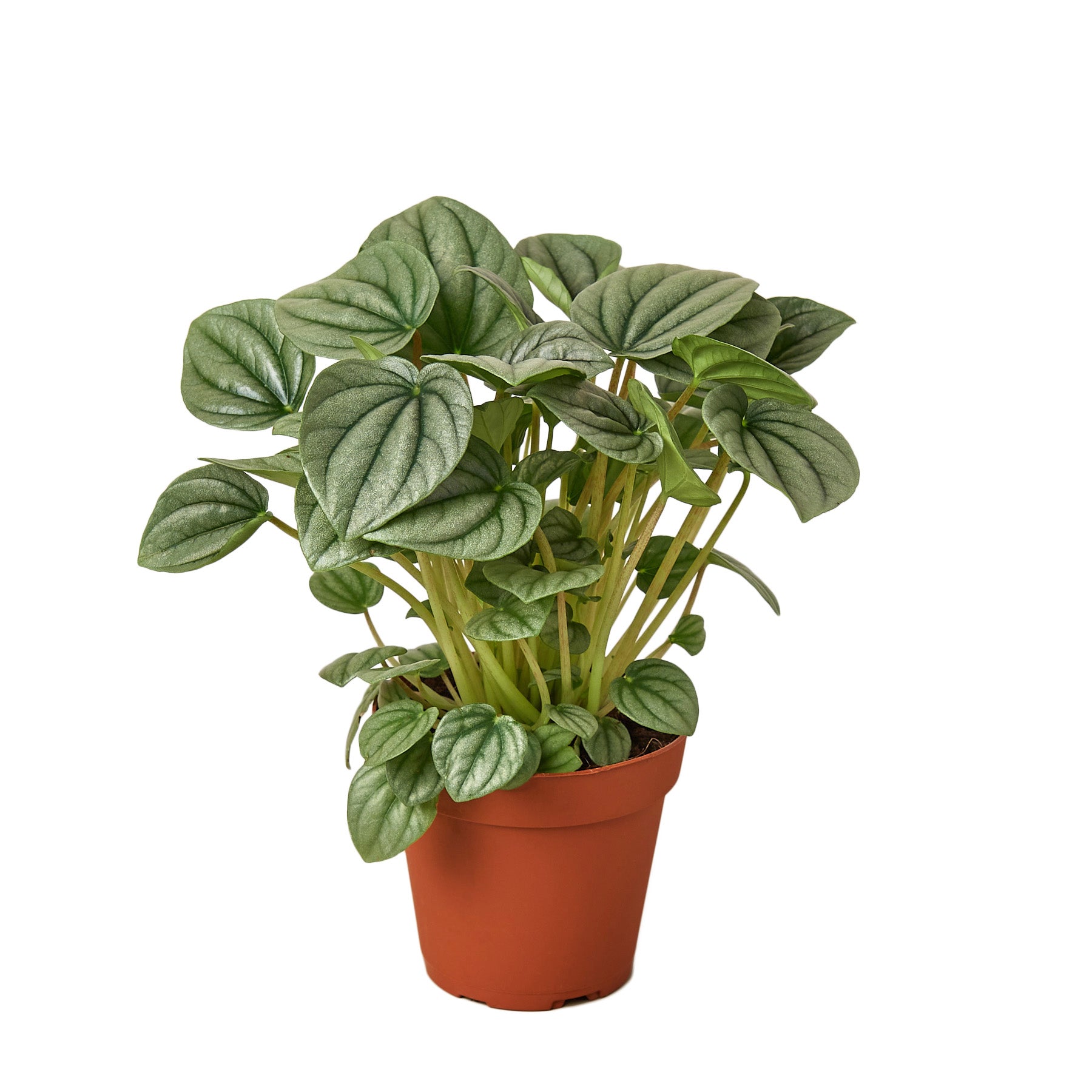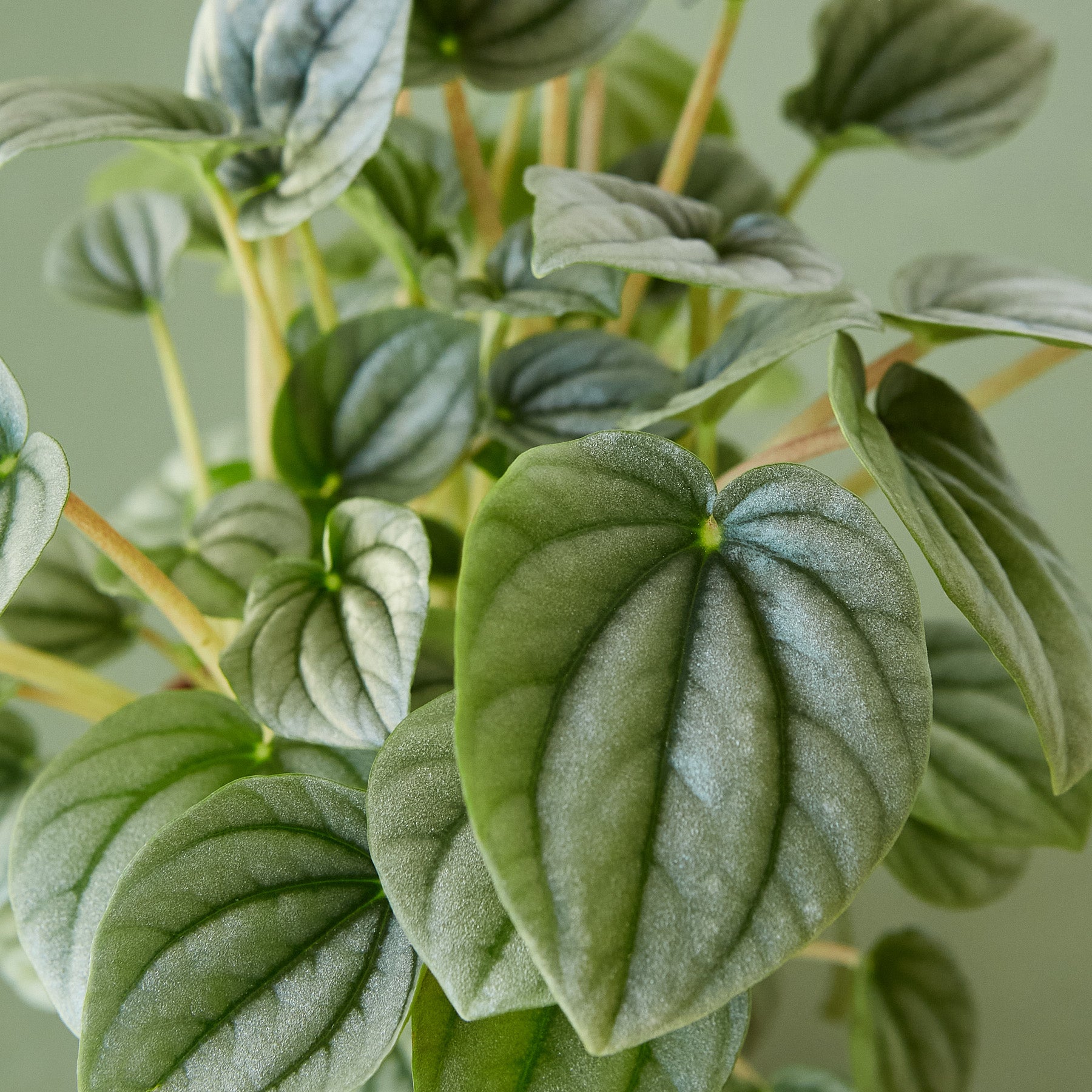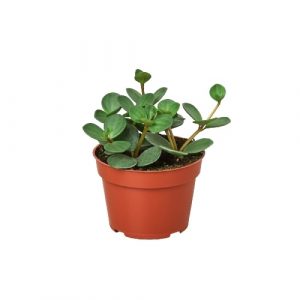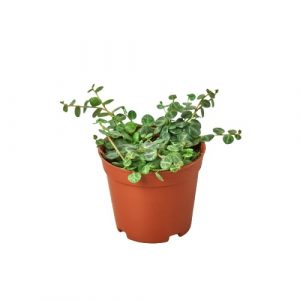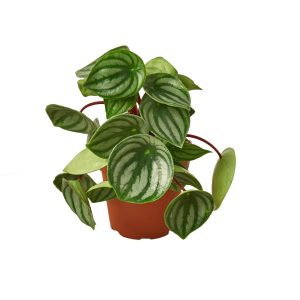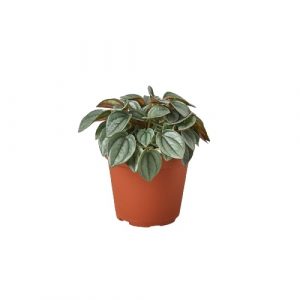The Platinum Peperomia (Peperomia platyphyllos) is a species of flowering plant in the mint family, Lamiaceae. It is endemic to the Serra da Estrela Mountains of central Portugal. The specific epithet derives from the Ancient Greek περιφέρειος (meaning of many peaks), in reference to the many mountain ranges in which it grows. The Platinum Peperomia is a spreading shrub or small tree up to 10 m tall with gray-green foliage and spikes of lavender flowers. The fruit is an oblong capsule 2-3 cm long containing two or three black seeds.
The shopping cart has been disabled temporarily due to high demand through our other sales channels. In the meantime, please feel free to take a look at the plants we offer. Thanks!
Peperomia ‘Platinum’ – 4″ Pot
Peperomia ‘Platinum’ – 4″ Pot – Live Tropical Houseplant – Grown in the USA
PLATINUM PEPEROMIA Features
- SIZE: 4" Pot
- Grown in the USA By licensed nursery.
